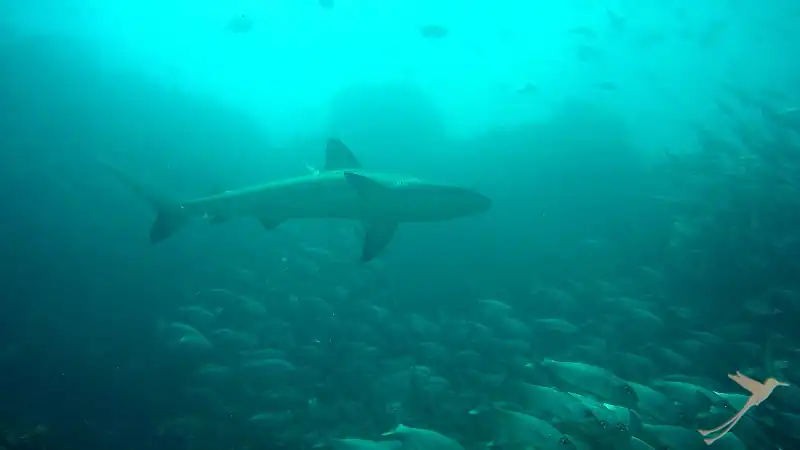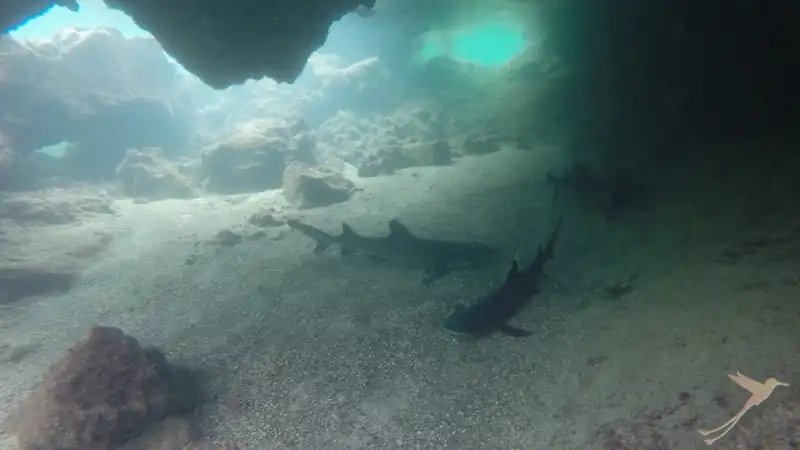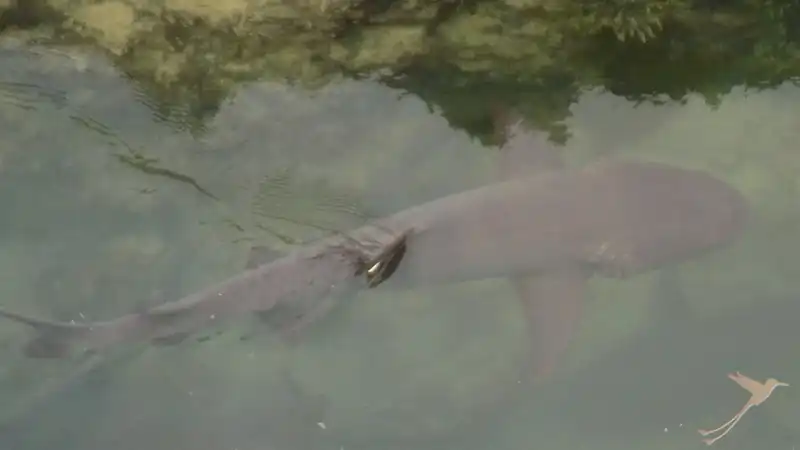
The underwater world of the Galapagos Islands is impressive and amazing. The archipelago is one of the most popular diving and snorkeling destinations in the world. We have already presented some species that you are sure to encounter underwater, such as the Galapagos hammerhead shark or various species of rays. In the following, we would like to take a closer look at the whitetip reef shark, which is very characteristic of the islands.

The whitetip reef shark is medium sized with a body size of about 1.50 to 1.60m. Due to its slender body, it weighs a maximum of 18kg. It has a broad head, large oval eyes with vertical pupils and clearly visible skin flaps next to the nostrils. It can be distinguished from other shark species by the white coloring at the tip of the caudal and dorsal fins. The rest of the body is gray to brownish with black spots and a white belly. The jaw consists of 84 to 98 teeth, with more rows of teeth behind. During the day, the shark mostly rests in reef caves and crevices, as unlike other species, it does not need to swim continuously to breathe. Meanwhile, it is cleaned by various cleaner fish. At night it becomes more active and starts hunting. Towards humans the species behaves curious, but only very rarely aggressive. The life span is about 15 to 25 years, depending on the region.

Habitat, diet and reproduction
This shark species lives in clear water near the seafloor in depths between 8 and 40m. It is very sedentary and stays for months and years in the same areas, mainly in coral reefs, over sandbanks, in lagoons and at slopes to deeper sea areas. The sharks are very peaceful and share their territory with other species. They feed mainly on small bony fish and eels, but also crabs. When hunting, they are sensitive to olfactory, acoustic and electrical stimuli of the prey, the optical perception is more for locomotion and contrast perception. They hunt in groups for the same prey and compete. In order to reproduce, the male holds the female by a fin, but cannot breathe during this time, which is why mating must take place as quickly as possible. After that the female is pregnant for 10 to 13 months. She then gives birth to one to six 52 to 60 cm large young, which are born alive. In the course of its life there are up to 12 offspring.

Endangerment
Thanks to the Galápagos Marine Reserve, sharks around the Galápagos Islands enjoy a protected status. Although shark populations are not as large as they should be due to years of shark fishing, conditions are in place for them to recover. However, this is only guaranteed if the animals continue to stay in the protected area.

You don’t have to be a deep-sea diver to see this interesting species up close. There are several places on Galapagos where you can even observe the whitetip reef sharks from the shore. For example, at the Tintoreras visitor point in the south of the island of Isabela. Tintoreras is the Spanish name for this shark species. It is also often possible to encounter these peaceful animals underwater when snorkeling and diving in other places that you visit as part of a cruise or island hopping.







